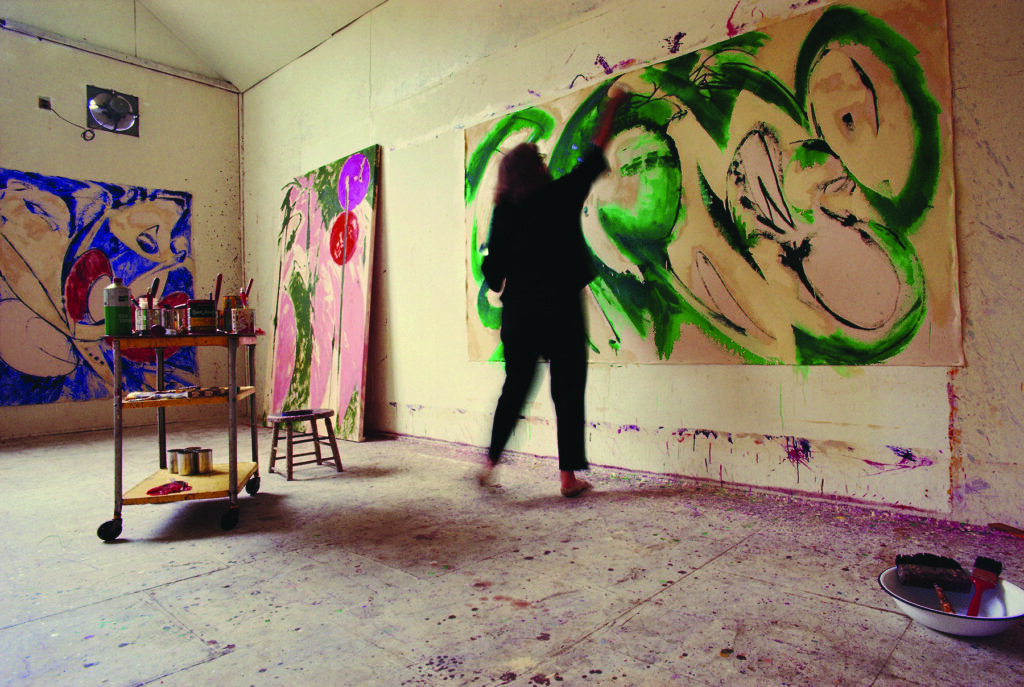We’re calling it — it’s the Summer of Women in Art. There’s been a wonderful spate of it on the South Fork this year. From large works, like the new exhibition at the Southampton Arts Center that just launched, “Change Agents: Women Collectors Shaping the Art World,” to the private all-female artist and artisan collection at Onna House, to the year anniversary of grassroots Women’s Art Center of the Hamptons (WACH), to smaller single artist shows like Emily Larsen, Casey Chalem, and Navajo artist Nani Chacon. And starting today, August 3, is the latest entry into this femme-forward season at the Pollock-Krasner House and Study Center: “Lee Krasner: Portrait in Green.”

“This is the largest Krasner we’ve ever shown, and it’s exciting to have a major canvas return to the location where it was painted,” says Helen Harrison, Eugene V. and Clare E. Thaw director of the Pollock-Krasner House of Study Center.
Krasner often gets put in the sidecar seat when her husband, the artist Jackson Pollock, is part of the conversation. Which, when you’re discussing the artists in tandem always seems to be the case. But Krasner’s work was as bold and broad (and even more so as the years waned on, and her technique and talent further developed and deepened) than that of her significant other.
In the initial years after Pollock’s tragic and untimely death in 1956, Krasner moved her workspace into the famous barn where he made some of his most renowned paintings. Stricken with insomnia and mourning (her mother also passed during this time), she made the space hers and, in it, created paintings full of movement, emotion and texture. It’s a body of work that grew and grew until Krasner died in 1984 at 75 years old.





But until she was actually captured on film, that alive-ness of her work was within the paint only. What’s really exciting and unique about this current exhibit of her work, and the showing of “Portrait in Green” in particular, is that it is the one and only work in which her process was captured on film.
“The fact that it’s the only one that was documented as she created it makes it all the more special,” says Harrison.
It was a special moment of trust between Krasner and photographer Mark Patiky, known more for fashion photos at the time, but tasked with taking a portrait of the female artist. In the photos, she’s a blur of movement, seemingly one with her work with only one picture where she stops to observe what she’s done.
She had many more years of painting after this, but to lay eyes on her actually creating is a special moment frozen in time. “Painting is not separate from life. It is one,” she once said to a reporter who inquired about her process. “It’s like asking ‘Do I want to live?’ And the answer is yes, and so I paint.”
In addition to “Portrait in Green” and the subsequent photos of Krasner alive and at work, there are 10 other stunning paintings created from that same year, 1969, on display in this exhibit, which runs from August 3 to October 29 at the Pollock-Krasner House and Study Center (closed Mondays) at 830 Springs-Fireplace Road. Make your reservation here.





